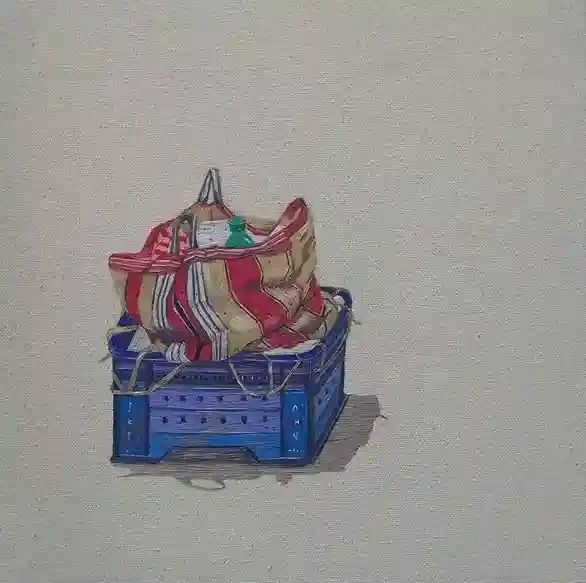Among the awardees of Abir First Take 2024, Kalyani (West Bengal) based visual artist Sandipan Acharjee is singled out for his evocative representations of the lives of labourers and the dignity of their struggles. His works End of the Day I and End of the Day II were chosen for this prestigious platform after they had received numerous submissions, proving his ability to create everyday narratives into stunning visual statements.
Sandipan’s foray into art is inherently connected with personal experiences and socio-economic conditions. He was born in 1988 & graduated in Commercial Art (vocational training) in 2009 under the West Bengal government. Residing and working in Kalyani, he bases his work on his life as a factory labourer. His dual identity enables him to establish an intimate rapport with his subjects — a category of people: daily labourers and to authentically and deeply capture their endurance and survival.

Sandipan’s art practice, which consists of hand embroidery on cloth, started in the time of COVID-19, one of the most difficult times in the world. Thread became his medium of act, memory and meditation. He recalls his mother making school outfits to help the family when they were having their roughest days. With those very threads, Sandipan began his exploration of embroidery, threading his memories of the past into the present realities of labour and survival.
Two early works, End of the Day I and End of the Day II, exemplify his creative philosophy. This set of works drew inspiration from Sealdah Market in Kolkata, where labourers, at the end of their workday, leave behind their tools and belongings. Sandipan believes that the items embodied the identities of the workers, containing narratives of resilience and fatigue of life. The detailed embroidery technique he uses gives an almost corporeal presence to these objects, eliding the physical and emotional labour loaded into these works.
The city becomes more than a character; it is a reminder that the labour class is often an invisible one. Concentrating on the artefacts they have left — a bag, a tool, a crate, he allows us to see their ongoing existence, even in their absence. His works pay homage to the strength of working people, the thread serving not only as material but also as a metaphor for survival and hope.

The artist’s complete and utter devotion to his craft is apparent in his four years of concentrating solely on embroidery. But each work starts with photographs of laborers, vendors and hawkers photographed at markets, train stations or streets. Godoy designs these images and painstakingly transfers them into embroidered photographs and works of art, where he also adds layers of meaning through stitching and embroidery. For Sandipan, embroidery is more than a technique; it is a meditative act, a means for him to link with his past and to grapple with the ongoing struggles faced by the working class.
Sandipan’s works have been widely showcased through a series of group shows held in India like Charukala Annual Exhibition in Calcutta. Tagore International Exhibition, Bhopal and Relief Art Gallery, Hyderabad. While he has received several certificates of merit over the years, this recognition, in particular, with Abir First Take 2024, is a huge life achievement for him.
Through his art, Sandipan Acharjee encourages viewers to question the hard lives of daily wage labourers who are often invisible in the grander narratives of society. His projects go beyond personal memory to become universal stories of endurance and dignity. As he veers off into explorations of labour, identity as well as hope, Sandipan’s embroidery stands as a tribute to the men and women who found their souls embedded in every thread of our shared plight.
Image Courtesy – AbirIndia
Contributor





